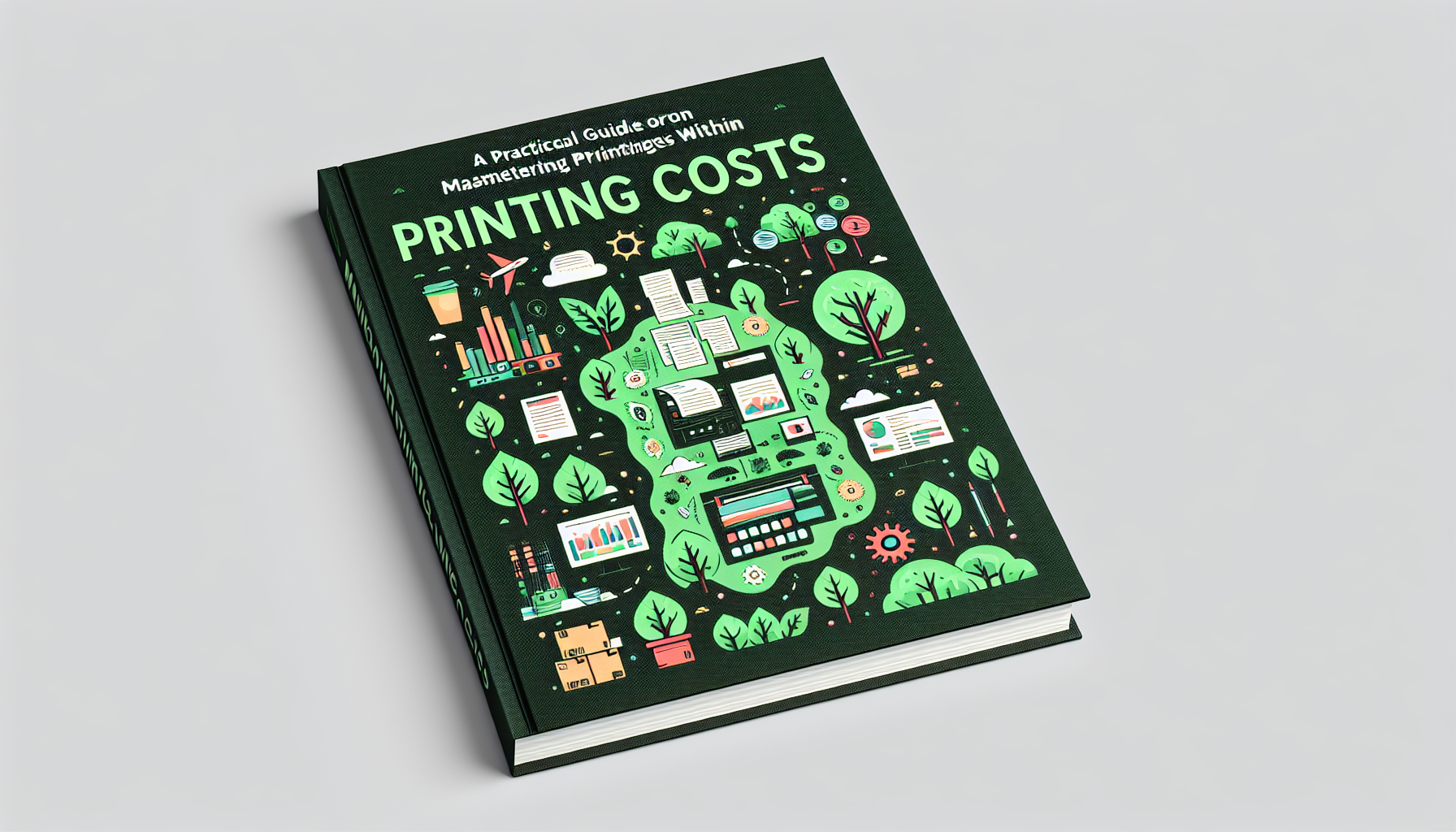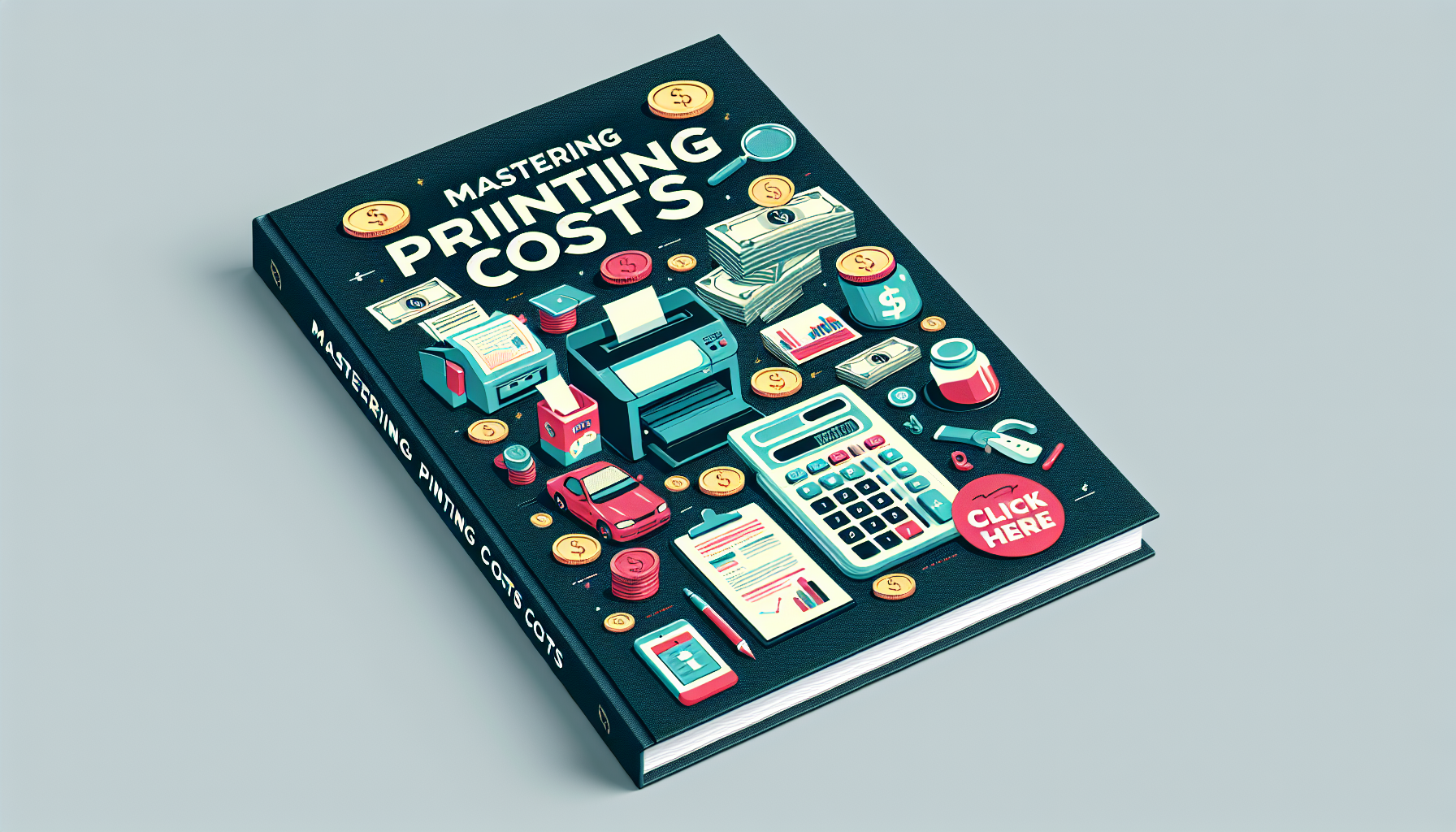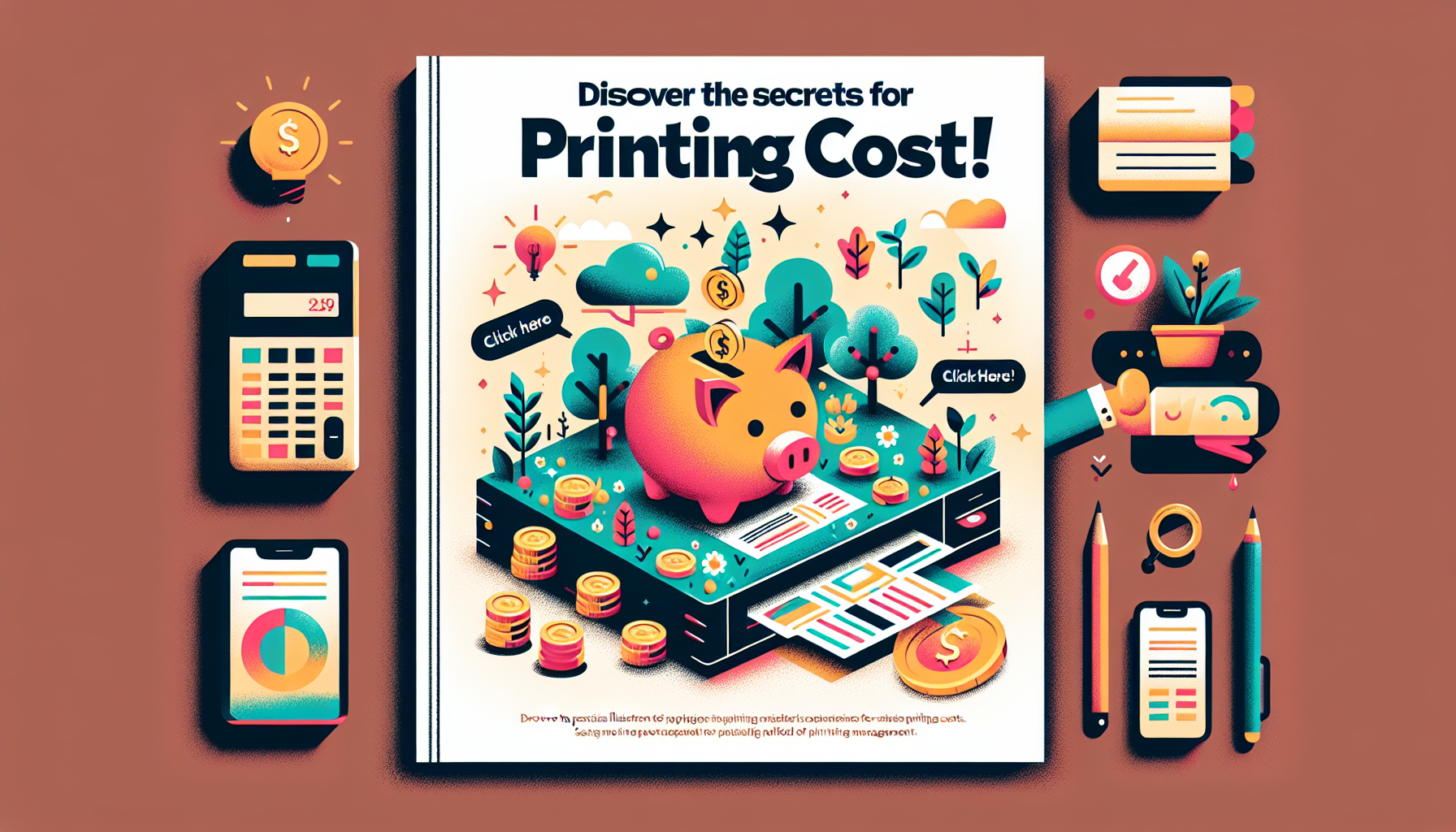Analysis of current printing costs
In a world where every penny counts, careful cost management becomes crucial, especially in a sector as volatile as Construction. Changes brought about by economic fluctuations and technological innovations, such as the emergence of3D printing, have a major impact on how we assess and control costs – including those related to printing.
Historically high, construction costs have started to decline, leading to a direct impact on the budgets allocated to the various segments of production, to which printing belongs. This is a boon for companies looking to optimize their expenses. But make no mistake, this adjustment must be made with a critical eye and a rigorous methodology.
Take the example of Harfleur, where the “Sphère” pavilion was created thanks to the prowess of 3D printing. This project, signed Archétudes, illustrates how cumulative benefits of additive manufacturing not only offer new opportunities but also the possibility of reducing printing costs.
To perform a current cost analysis, there are several key steps to consider. First of all, an accurate inventory of actual expenses must be established, taking into account not only the cost of equipment and materials but also the maintenance and optimization of print workflow processes. THE public market has understood this well by experimenting with new financing methods, such as third-party financing and deferred payment in Energy Performance Contracts (EPC), to reduce immediate costs and rebalance budgets.
For businesses, this means reviewing every detail of the printing process to pinpoint where savings can be made. This ranges from printer maintenance contracts to assessing the real usefulness of each print. Such an approach can lead to the exploration of innovative solutions such as the rental of professional printers which, in addition to offering high-performance equipment, can allow you to benefit from after-sales service and optimized maintenance.
Businesses also need to look atenvironmental impact of their impressions. Indeed, by following practical recommendations, such as those suggested to reduce the environmental footprint of our printing, it is possible to make significant savings, by promoting eco-responsible practices.
To make all of this a reality, strategic monitoring is essential. Staying alert to market signals, such as the upside potential of innovative solutions for example in the area of blockchain and smart contracts, could reveal unexpected opportunities for cost optimization.
In conclusion, theanalysis of current printing costs is not just a question of numbers, it is a multifaceted strategy that takes into account economic transitions, technological innovations and environmental requirements. For companies in construction and beyond, it is crucial not to underestimate the importance of such analysis to maintain competitiveness and long-term viability.
Choice of economical and ecological printers

Printing cost management: strategic marking
Managing printing costs is a constant challenge for businesses looking to optimize their budget without sacrificing quality and durability. A wise choice ofeconomical and ecological printers can represent a real step forward, making it possible to reconcile performance and respect for the environment.
Choose wisely: the Epson EcoTank range
When it comes to selecting a printer, the range EcoTank from Epson stands out thanks to its high-capacity ink refill systems. These printers reduce the cost per page and limit waste, which is a double victory for budget management and ecology.
Adaptation: More than a trend, a necessity
In the current context where theadaptation to climate change is essential, it is essential to choose partners and suppliers who place environmental issues at the heart of their concerns. Integrating an eco-responsible vision into the choice of printing equipment becomes a committed and strategic act over time.
Innovation and ecology: 3D printing by Spie Batignolles
The emergence of new technologies such as 3D printing opens up horizons in terms of eco-design. The EmPrinte offer from Spie Batignolles, which is part of this dynamic, highlights the importance of choosing innovative and sustainable solutions.
Ink cartridges: a crucial choice
Effective management also requires the adequate selection of ink cartridges. A Top 10 cartridges for brands like Canon, HP and Epson can serve as a guide to making an informed choice, with the aim of reducing costs and the ecological footprint.
Trust and technology: integrating AI into management
Trust in emerging technologies, including artificial intelligence (AI), is crucial for optimizing printing processes and predicting consumable needs, thus minimizing losses and unintentional additional costs.
In conclusion, buying more economical and environmentally friendly printers is an investment in the future. It not only allows reduce costs but also to participate in the collective effort to protect our planet. Drawing inspiration from best practices and the latest technological innovations is the key to efficient and responsible printing cost management.
Implementation of a responsible printing policy

In a world where environmental concerns and budgetary control have become central to business strategy, managing printing costs is proving to be a crucial lever. A responsible printing policy is able to significantly reduce expenses while promoting the company’s societal commitment, thus being part of a dynamic Corporate Social Responsibility (CSR).
Printing Process Optimization
To initiate effective cost management, it is first necessary to examine current practices. Analyzing print flows within the company helps detect possible redundancies and wasted resources. As illustrated by the example of Doxense, integrating management software can lead to substantial savings and greater environmental proactivity.
Choice of Eco-responsible Materials and Consumables
Invest in economical printers, consider equipment rental efficient or using less polluting consumables are all options for maintaining efficiency while reducing the ecological impact. This is a form of sobriety management, an emerging concept that highlights the importance of dematerialization and the wise selection of printing equipment.
Employee Training and Awareness
A responsible printing policy also involves team training. It is necessary to educate staff about good printing practices and to promote a change in habits in favor of double-sided printing, reducing the printing format or even favoring the use of digital documents.
Proactive Maintenance
Regular monitoring of printers not only helps prevent malfunctions, but also ensures that devices are operating at their peak efficiency. This contributes to a reduction in printing costs and the company’s carbon footprint, thus aligning with the values of sustainability and performance advocated by ambitious architectural projects such as the French Pavilion for the Osaka 2025 World Expo.
Monitoring and Evaluation Measures
To ensure continuous control of printing costs, it is essential to set up performance indicators. Conducting regular audits, as well as analyzing data provided by print management tools, will be crucial to evaluate the effectiveness of the implemented policy and to adjust it if necessary.
In conclusion, responsible printing cost management is not only an economic issue, it is also an ethical approach that reflects the company’s commitment to sustainable development. This is how we build a solid brand image, a streamlined economy and a preserved environment. The tools and strategies are numerous: it is up to each company to find the path that suits it, drawing inspiration from successes like that of construction site of Notre-Dame de Paris, delivered on time and on budget, a model of efficiency and far-sighted management.
Optimization of printing parameters to reduce consumption

In an economic context where every euro counts, optimizing printing parameters is crucial to controlling your expenses. If, today, the approach of reduction in consumption is intensifying in all strata of the company, printing remains an expense item that is often underestimated. However, by adopting good practices and appropriate technology, it is possible to reap substantial savings.
Embrace “as a service” printing for optimized management
The emergence of“as a service” print revolutionizes printing cost management. No more costly purchases and maintenance constraints, this formula offers you the flexibility to adapt your printer fleet to your real needs. Imagine hassle-free management where the service provided includes not only the equipment, but also the assurance of optimal efficiency thanks to perfect settings, proactive maintenance and precise monitoring of your consumption.
Advanced techniques for controlling print volumes
Companies must now redouble their efforts to reduce their printing volumes. This involves educating employees, but also through the judicious use of software solutions. These make it possible to control and analyze printing behavior within the company, proposing adjustments to reduce waste of paper and ink, and therefore reducing costs.
Reduce energy consumption with the right settings
Optimizing print settings also goes hand in hand with reduction of the energy footprint. Printing devices, like other equipment in the industry of the future, are increasingly designed to be eco-responsible. This aspect results in a significant reduction in energy consumption when they are configured appropriately. Remember to activate power saving modes and set automatic sleep.
The impact of cloud management on printing costs
It is also important to emphasize that the management of cloud spending has a direct impact on printing costs, especially when we talk about dematerialized or remote printing. It’s about taking a strategic approach to selecting the cloud services and solutions that precisely meet your needs, eliminating anything unnecessary that could add to your bills.
Latency: Reducing waiting times for a more agile printing company
We rarely associate the notion of latency with printers, but a printing delay can be symptomatic of inappropriate settings. Reduce this waiting time, it means improving the responsiveness of devices and thereby, overall productivity. Flow optimization, efficient networking and reducing digital bottlenecks all contribute to better time management.
Printers and ink cartridges: a couple to harmonize
Finally, the synergy between printers and their consumables is fundamental to controlling costs. Using appropriate ink cartridges that meet the manufacturer’s specifications not only ensures print quality but also extend the lifespan of the device. It is essential to be properly informed to make wise choices in this area.
Managing printing costs requires a multifaceted approach that goes beyond the simple act of printing. It’s time to take the reins of your printing fleet by exploring these various strategies to achieve a tangible reduction in your consumption. Take the step towards intelligent optimization and real savings for your business.
Use of digital printing and dematerialization solutions
The digital age has transformed business strategies for optimal management of printing costs. Behind the adoption of new printing technologies, an entire paradigm is evolving, moving from a traditional approach to digitization and dematerialization processes. Let’s analyze together the foundations of this revolution and the solid advantages it offers.
The transition to digital printing
Turning the page on traditional printing in favor of more modern systems like those offered by Oki And Toshiba, which tune their toners for better performance, represents an essential optimization approach. With the practice of digital printing, the cost per page can significantly decrease, thus improving the usage cost total.
Also, thedigital printing offers a significant advantage: personalization. THE transpromo, which combines transaction and promotion in a single document, is becoming a real opportunity, even in a context of increasing dematerialization. This paves the way for more targeted and cost-effective customer communications.
The dematerialization of documents to reduce costs
Fuel for the digital transition, dematerialization plays a key role in optimizing printing costs. Toshiba TFIS is positioned at the heart of this dynamic by offering solutions in line with current expectations. From the notable reduction in paper consumption to increased efficiency in document flow management, dematerialization via a Electronic Document Management (GED) allows you to cross a new productivity threshold.
Here is five good reasons to adopt a GED for your business:
- Reduction of physical storage spaces and associated costs.
- Reinforced security of confidential data.
- Accessibility and easy sharing of documents, the key to effective collaboration.
- Long-lasting electronic archiving that complies with legal standards.
- Fast return on investment thanks to increased efficiency.
Companies such as Ziegler have understood this by moving resolutely towards dematerialization and reaping the benefits of lighter and more economical document management.
Printing “as a service”: a new era of cost control
Printing as a service is becoming increasingly popular. This approach allows businesses to access cutting-edge printing systems without bearing the burden of heavy investments. Through this model, FlexPrint offers the opportunity to optimize the Total Cost of Ownership (TCO) printing systems. The service includes not only hardware, but also maintenance and renewal of consumables, representing an all-in-one solution for increased budget transparency.
Concrete solutions from the European graphics industry
Europe is not left out in this sectoral development. The solutions resulting fromEuropean graphics industry constitute responses adapted to market requirements and set an example in terms of applied dematerialization. These advances are part of a global approach, where HR digitalization reflects, for example, the paradigm shift within French companies.
In conclusion, optimizing printing costs through digital printing and dematerialization responds to economic, ecological and productivity issues. It is a real strategic asset for companies that not only want to manage their expenses efficiently, but also want to take the digital shift with confidence. The solutions exist; you just have to adopt them to reap their multiple benefits.


Leave a Reply